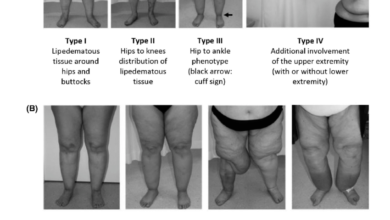Understanding the Different Types of Hormone Replacement Therapy

Hormone Replacement Therapy (HRT) is an essential medical treatment for individuals experiencing hormonal imbalances. Whether it’s related to menopause, andropause, or other health conditions, HRT plays a crucial role in restoring hormone levels and alleviating symptoms such as hot flashes, mood swings, fatigue, and loss of libido. However, not all therapies are the same. To make informed decisions, it’s important to understand the different types of hormone replacement therapy available. By choosing the right type of therapy, patients can maximize their health benefits and improve their quality of life.
Why Hormone Replacement Therapy is Needed
Hormones are vital regulators of various bodily functions, from metabolism to reproductive health. As we age, hormone production naturally declines, leading to various symptoms that impact overall well-being. For example, women in menopause experience a drop in estrogen, while men face a decrease in testosterone during andropause. Hormone Replacement Therapy helps manage these symptoms by replenishing depleted hormones. Understanding the types of hormone therapies available is key to finding the most effective treatment for individual needs.
Types of Hormone Replacement Therapy
There are several types of hormone replacement therapies, each designed to address specific hormonal needs. Depending on factors such as age, gender, and medical history, healthcare professionals recommend different treatments for different conditions. Here are some of the most commonly prescribed types:
1. Estrogen Replacement Therapy
Estrogen replacement therapy is the most common treatment for women experiencing menopause. As estrogen levels decline, women may experience hot flashes, night sweats, mood changes, and bone loss. This therapy involves supplementing estrogen to restore balance. It’s typically administered through pills, patches, or gels, depending on patient preferences and medical recommendations. This type of hormone therapy can significantly reduce menopause symptoms, especially when started early.
2. Progesterone Replacement Therapy
In many cases, estrogen therapy is combined with progesterone to create a balanced treatment plan. Progesterone helps protect the lining of the uterus and reduce the risk of endometrial cancer, which can be a concern when using estrogen alone. For women who have not had a hysterectomy, this combination therapy is often the recommended type of hormone replacement.
3. Testosterone Replacement Therapy
While HRT is often associated with women, men also benefit from hormone replacement therapies. Testosterone replacement therapy is a popular treatment for men experiencing low testosterone levels, a condition commonly known as andropause. Symptoms like fatigue, depression, muscle loss, and sexual dysfunction can be alleviated through this type of hormone therapy. It is typically administered via injections, gels, or patches, and works to restore energy, improve mood, and enhance physical performance.
Bioidentical Hormone Replacement Therapy
Another category worth noting is bioidentical hormone replacement therapy (BHRT), which uses hormones chemically identical to those the body produces. BHRT can be used for estrogen, progesterone, and testosterone therapies. Advocates of BHRT claim that this type of hormone therapy is more natural and better tolerated than synthetic versions. However, it’s essential to consult a healthcare provider to determine if this approach is suitable, as the effectiveness and safety of BHRT can vary depending on the individual.
Methods of Administering Hormone Replacement Therapy
The method of administration is another important factor when choosing the right type of hormone replacement therapy. Each method offers different benefits, and the choice depends on a combination of patient preferences, medical history, and lifestyle.
1. Pills and Oral Tablets
One of the most common ways to administer HRT is through oral tablets. This method is easy and convenient but may not be suitable for individuals with certain liver conditions, as oral medication is processed by the liver.
2. Patches
Transdermal patches are another effective way to deliver hormones directly into the bloodstream. Patches are often preferred because they bypass the liver and reduce the risk of certain side effects associated with oral HRT.
3. Gels and Creams
Hormone gels and creams are applied to the skin and allow hormones to be absorbed into the bloodstream gradually. This method is often chosen for its ease of use and because it provides more controlled hormone delivery.
4. Injections
Hormone injections are commonly used for testosterone replacement therapy, providing a more direct and potent dose. The injections are typically administered every few weeks and offer long-lasting effects.
Factors to Consider When Choosing a Type of Hormone Therapy
Choosing the right type of hormone replacement therapy depends on several factors, including your age, medical history, symptoms, and personal preferences. It’s essential to work closely with a healthcare provider to determine the best approach. For example, those with a higher risk of breast cancer may need to avoid estrogen therapy, while others may benefit from a combination of hormones. Additionally, discussing the method of administration—whether oral, transdermal, or injectable—is a key part of the decision-making process.
The Role of Personalized Treatment Plans
Hormone replacement therapy is not a one-size-fits-all solution. A personalized treatment plan ensures that the therapy addresses the specific needs of each patient. By tailoring the types of hormone therapy to individual requirements, healthcare providers can help manage symptoms more effectively while minimizing side effects. Patients in Florida, for instance, benefit from localized care, such as Hormone Replacement Therapy in Tampa, where specialized clinics offer customized HRT options based on thorough health assessments.
Summary
Understanding the different types of hormone replacement therapy is critical to making informed decisions about your health. Whether you’re dealing with menopause, andropause, or other hormonal imbalances, knowing your options can guide you toward a more balanced and healthier lifestyle. From estrogen and progesterone therapies for women to testosterone treatments for men, hormone replacement therapy offers numerous ways to restore your body’s natural balance. Always consult with your healthcare provider to choose the right method and type of hormone therapy that fits your unique needs.





